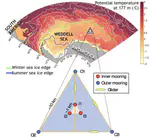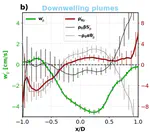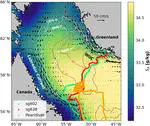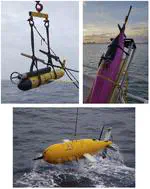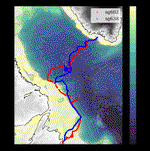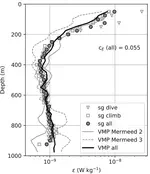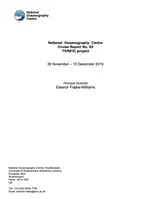Synopsis
The permanent pycnocline (PP) is the ocean’s fundamental organising feature. It is a layer of stronger stratification found between 200–1500 m deep in the ocean and roughly separates the ocean into a 2-layer system (lighter water above; heavier water below). The near-surface layer (top 1 km) can feel the influence of the atmosphere more often, while the deep ocean (below the pycnocline) may be isolated from the surface for decades to hundreds of years or longer. This basic structure of the ocean’s waters affects how the ocean plays a role in climate, including how the ocean responds to weather and storms, how the circulation changes, and how carbon and other materials are stored in the deep ocean. Due to the important regulating role of the ocean’s pycnocline, it has been a topic of study for decades. However, the theories developed to explain its existence are based on the ocean structure in the northern hemisphere. In the Southern Ocean, the properties of the ocean differ. For example, the layering of the ocean in the northern hemisphere is due to temperature gradients (warm at the surface, cold below). But in the Southern Ocean, the layering is dominated by salinity (fresh above, salty below). And rather than the atmosphere causing changes in the ocean density, in the Southern Ocean the process of sea-ice growth or melt changes the ocean’s surface density. In this project (PycnMIX), we propose to assess how wintertime sea-ice growth and melt in the Weddell Sea in the Southern Ocean affects the ocean’s stratification, especially in the region of stronger stratification below the surface region of well-mixed water. This region connects to the permanent pycnocline in the wider southern hemisphere. Using ocean observations (moored installations of equipment and autonomous marine robots), we will measure the small-scale mixing processes which occur as ice grows or melts, and investigate how these processes affect the stratification and changes in ocean density. To do this, we will (1) deploy autonomous marine robots over-winter in the Southern Ocean, (2) develop methods to estimate small-scale turbulent mixing in the ocean from gliders navigating acoustically under the sea ice, and (3) use the data to describe how turbulent mixing responds to surface and sea-ice processes in the Southern Ocean. This will enable us to better understand how the pycnocline is formed, and how these processes affect changes in the seawater density and stratification in the Southern Ocean.

